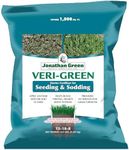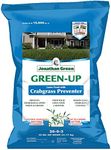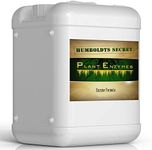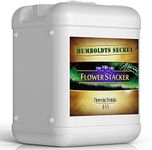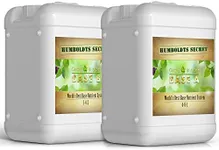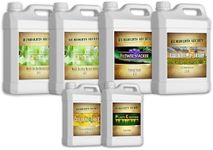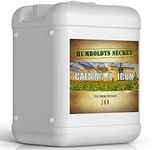Buying Guide for the Best Fertilizer For New Sod
Choosing the right fertilizer for new sod is crucial to ensure that your lawn establishes quickly and grows healthily. Fertilizers provide essential nutrients that help the grass roots to develop and the blades to grow lush and green. When selecting a fertilizer, it's important to understand the key specifications and how they relate to the needs of your new sod. This guide will help you navigate through the important factors to consider so you can make an informed decision.N-P-K RatioThe N-P-K ratio represents the percentage of Nitrogen (N), Phosphorus (P), and Potassium (K) in the fertilizer. Nitrogen promotes leaf growth, Phosphorus supports root development, and Potassium enhances overall plant health. For new sod, a higher Phosphorus content is beneficial to encourage strong root establishment. Look for a fertilizer with a balanced ratio like 10-20-10 or 15-30-15. If your soil test indicates specific deficiencies, you may need to adjust the ratio accordingly.
Slow-Release vs. Quick-ReleaseFertilizers can be either slow-release or quick-release. Slow-release fertilizers provide nutrients over an extended period, reducing the risk of burning the grass and requiring less frequent applications. Quick-release fertilizers deliver nutrients immediately, which can be beneficial for a quick boost but may require more frequent applications and careful monitoring to avoid over-fertilization. For new sod, a slow-release fertilizer is generally recommended to provide consistent nourishment as the grass establishes.
Organic vs. SyntheticOrganic fertilizers are made from natural materials and release nutrients slowly as they break down. They improve soil structure and microbial activity, which can be beneficial for long-term soil health. Synthetic fertilizers are chemically manufactured and provide nutrients more quickly. They are often more concentrated and can be tailored to specific nutrient needs. If you prefer a more natural approach and are willing to wait for slower results, organic fertilizers are a good choice. If you need faster results and precise nutrient control, synthetic fertilizers may be more suitable.
Application MethodFertilizers can be applied in various forms, including granular, liquid, and spike. Granular fertilizers are easy to spread and provide a slow, steady release of nutrients. Liquid fertilizers are quickly absorbed and can be applied with a sprayer for even coverage. Spikes are convenient for small areas but may not provide even distribution. For new sod, granular fertilizers are often preferred for their ease of use and consistent nutrient release. However, if you need a quick nutrient boost, a liquid fertilizer can be a good supplement.
Soil pH CompatibilityThe pH level of your soil affects nutrient availability and grass health. Most grasses prefer a slightly acidic to neutral pH (6.0-7.0). Some fertilizers are formulated to adjust soil pH, either raising or lowering it as needed. Before choosing a fertilizer, it's important to test your soil's pH. If your soil is too acidic or too alkaline, select a fertilizer that can help bring it to the optimal range for your sod type. This ensures that the nutrients in the fertilizer are effectively absorbed by the grass.





